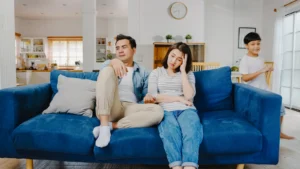About 12 years ago, the movie “The Secret Life of Walter Mitty” depicted the push-pull between accepting disappointing real-life experiences and conflating them into imaginary ones. And a 2017 YouTube analysis, currently touting 743,000 views, dives right into the core issue: maladaptive daydreaming—a growing research area since 2002, when the term was first coined by psychologist Eli Somer.
What Is Maladaptive Daydreaming?
Maladaptive daydreaming (MD) involves spending an inordinate amount of time (typically at least one hour per day) in purposeful daydreams that evoke emotion, behavior that is consistent with what is happening in the daydream, and the development of detailed characters to whom the person may develop attachments. This set of repetitive, compulsive behaviors interferes with daily functioning (e.g., because the person often spends several hours at home daydreaming instead of interacting with people in real life), and it can cause significant distress (e.g., shame, embarrassment, or frustration).
Common characteristics of maladaptive daydreaming include:
- Engaging in repetitive movements or body-focused repetitive behaviors (BFRBs), such as skin-picking or hair-pulling
- Displaying external behaviors that align with the daydream (for example, the person may show facial expressions and body language consistent with their daydream)
- Using music to induce the daydream or to make it more enjoyable
The appeal of maladaptive daydreaming makes sense when you think about it. If you had the incredible ability to zap yourself into extremely vivid and realistic daydreams, and if they could include whatever life story your heart desired, wouldn’t you consider trying it?
In their imaginations, MDers can live whatever lives they want. In stark contrast, reality frequently serves MDers with low self-esteem, disappointment, and rejection sensitivity (for more on this, see clinician Leon Garber’s PT articles on the subject).
Why Don’t More People Know About Maladaptive Daydreaming?
In my view, it’s clear that maladaptive daydreaming is a behavior that is worthy of clinical and research attention. It isn’t like there aren’t empirically-based, research-backed measures of the behaviors and challenges linked to MD (Somer et al., 2017). So why do most clinicians and the general public not know it exists?
Despite the increased evidence of MD as a legitimate concern that can be highly debilitating, it is still not considered a disorder per the DSM-5-TR or ICD-10, nor is it mentioned as a symptom or as a set of symptoms.
As a practicing clinical psychologist, I can attest that it can seem rare to come across a patient with maladaptive daydreaming. But existing research on MD estimates that it occurs in about 2.5 percent of the general population, which is similar to the prevalence rates of some other anxiety and mood disorders.
This suggests that patients either do not have the language to describe and identify their maladaptive daydreaming, clinicians don’t ask about it, or patients treat this “habit” like any other problematic behavior—they are ashamed of it, so they don’t proactively volunteer this information in therapy.
Regardless, as Mental health providers, we hold an obligation to educate ourselves about the available science on emerging Mental health conditions. And with 132,000 members of the Maladaptive Dreaming sub-Reddit, I’d argue there are too many people out there who are struggling and not enough providers who are informed and trained in the treatment of maladaptive daydreaming.
What Therapists Should Know About Maladaptive Daydreaming and Neurodivergence
If you’re a therapist—and if I haven’t yet sold you on the notion of “it’s time to take this seriously”—think about your neurodivergent clients. Research shows incredible overlap between MD and certain aspects of neurodiversity (e.g., autism or ADHD). So if you’re a clinician who works with people who are neurodivergent (or if you are neurodivergent), consider taking note:
Neurodiversity Essential Reads
Somer and colleagues (2017) reported that of those with MD, about 74 percent meet criteria for more than three additional disorders:
- 77 percent have ADHD
- 72 percent have an anxiety disorder
- 67 percent have a depressive disorder
- 54 percent have OCD, or they meet criteria for a disorder involving BFRBs
What’s more, about 28 percent attempt suicide at least once.
Similar associations were found in a 2025 meta-analysis including 40 studies (totaling 24,977 participants). MD was significantly associated with increased ADHD symptoms, depression, anxiety, dissociation, OCD symptoms, general psychopathology symptoms, psychotic symptoms, autism symptoms, and traumatic experiences. MD was also associated with increased emotional dysregulation, loneliness, somatic symptoms, shame, internet overuse, and decreased self-esteem.
Notably, although the prevalence rate of ADHD in MD samples tends to be very high (77 percent), in ADHD samples, MD occurs only about 20 percent of the time. This is probably reflective of ADHDers’ greater general vulnerability for compulsive behaviors, of which MD is one of many. For example, not everyone with ADHD will develop a problematic video-gaming habit, and the same goes for maladaptive daydreaming. Some researchers propose that MD may even qualify as a behavioral addiction, and ADHD often co-occurs with addictions.
Similar to the adult (especially female) neurodivergent community, maladaptive daydreamers often report feeling lonely and misunderstood, primarily because there aren’t any diagnostic criteria that seem to fully describe their difficulties. Soffer-Dudek and other MD researchers have emphasized that the absence of a formal diagnostic category can lead even well-respected professionals to minimize or disregard associated clinically significant challenges. Instead, they may end up labeling a clearly abnormal and debilitating behavior as “normal functioning.” To the maladaptive daydreamer (and to individuals struggling with other under-recognized and underappreciated conditions, I can imagine there could not be a more painful slap across the face.
With the overlap between MD and ADHD, it’s unsurprising that 43 percent of autistic adults report struggling with MD (West et al., 2022), and that the association between autism and MD symptoms is related to increased emotional dysregulation and loneliness. It is also possible that, given the overlap between repetitive behaviors in autism and in MD, decreased awareness of MD among the diagnostic community could lead to misdiagnosed autism and overlooked MD. And with the use of MD as an unhelpful coping strategy, those who are neurodivergent may be more likely to fly under the radar and not get accurately diagnosed with ADHD or autism, due to the masking that the MD can unfortunately provide.
Interestingly, being female seems to exacerbate the likelihood that someone with ADHD would also engage in maladaptive daydreaming or that someone with MD would also have ADHD. Somer and colleagues’ 2025 meta-analysis found that the female percentage of their sample moderated the significant positive association between MD and ADHD, such that when there were more women in the sample, the association between MD and ADHD became stronger. Conversely, as the percentage of males increased, the relationship between MD and ADHD became weaker.
This strongly suggests that girls and women with ADHD may be especially prone to falling for the addictive lure of MD. This link makes sense when you consider that girls and women, more generally, engage in more mind wandering, are more depressed and anxious, and have a more active default mode network when compared to boys and men.
I’d like to leave off on the following note: Empirical evidence and anecdotal evidence—and for me, my own personal experience with a client—make two things clear: For one, maladaptive daydreaming is real and severe; for another, it’s not likely to spontaneously resolve itself.
The people who struggle with maladaptive daydreaming need help, and they deserve clinical attention. They deserve to be listened to and to be taken seriously.













